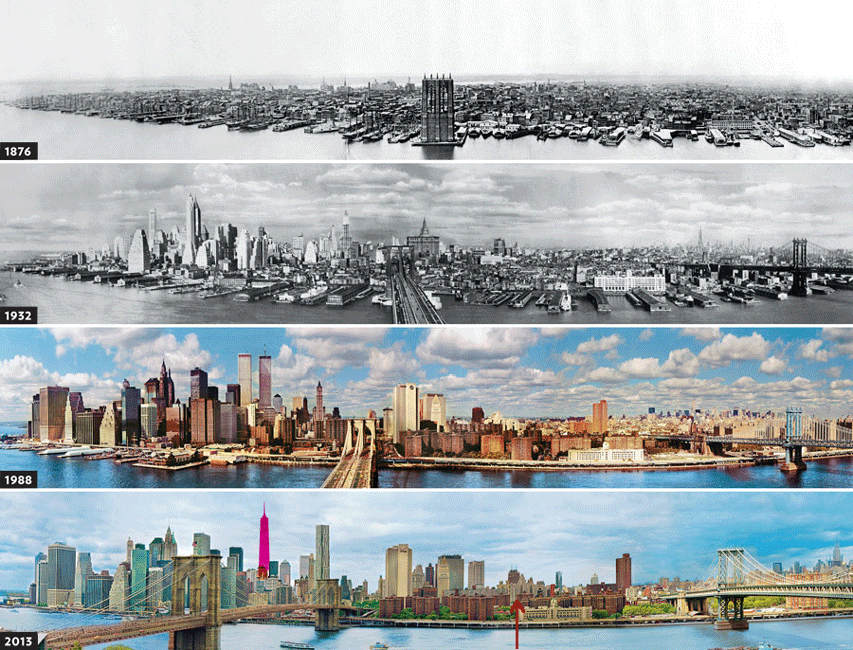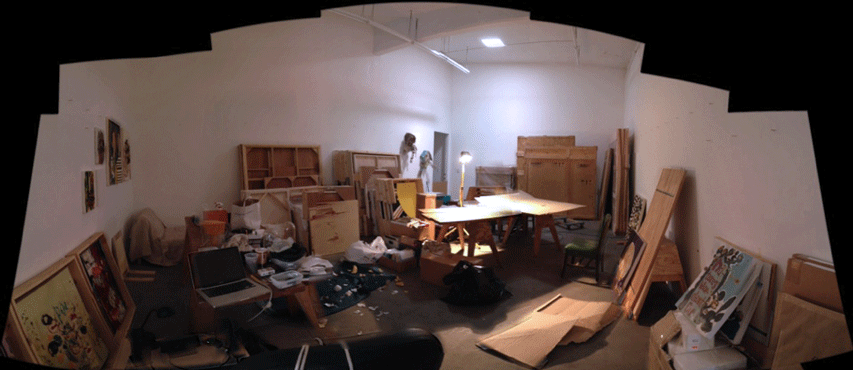August 26, 2012
August 25, 2012
LES & Lincoln
We'll be living at the Seward Co-Op. Who was William H. Seward? He was a United States Senator from New York who served from 1849?1861 and later went on to be Secretary of State in the Lincoln administration. He was targeted and attacked, in his home as part of the Lincoln assasination (pretty rough action: his attacker's gun misfired, he was pistol whipped and stabbed repeatedly in his head and neck), he recovered and was later responsible for the purchase of Alaska.
According to Seward biographer John M. Taylor, "As Lincoln and Seward became more comfortable in their relationship, the latter became a target of the president's wit. According to Fred Seward, his father, searching for the president in the White House, once found him polishing his boots. When Seward remonstrated, telling Lincoln sternly that in Washington 'we do not blacken our own boots,' the president was equal to the occasion, remarking good-humoredly, "Indeed, then whose boots do you blacken, Mr. Secretary?"
More Lincoln under the fold...
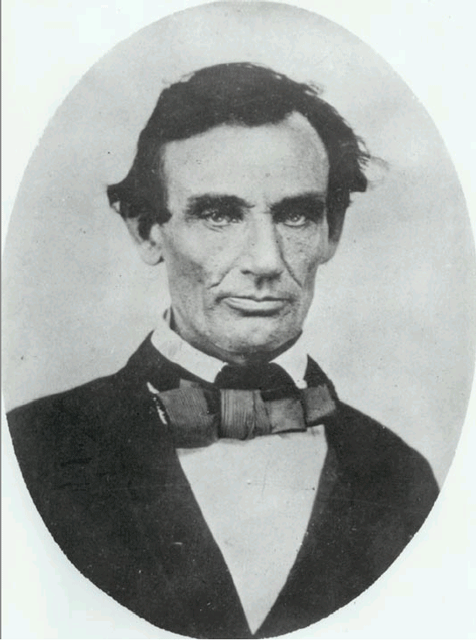
I highly recommend every volume of Michael Burlingame's Abraham Lincoln: A Life. I downloaded from Audible, excellent if you have long stretches of meditative time to let it wash over you. Burlingame's book is comparable to John Richardson's A Life of Picasso biography series in terms of the granularity of their description:
What occurred to Burlingame, however, was one of those basic?almost primitive?insights that make for the shifting of entire paradigms. Every biographer, he reasoned, works from notes. Most of the notes never manage to get into the biography for reasons of space, just as most of the 3x5 cards we amass for college term papers never get into the final submission. In our case, the excess 3x5s wind up in the waste basket; in the case of famous writers, they wind up in collections of authors' papers in various archives and libraries, where no one except the most diligent (or the most antiquarian) ever bother to call for them. Surely the same thing must hold true for biographers of Lincoln. The more famous (like the muckraking journalist Ida Tarbell), the more likely the unused material has survived; the closer they were to Lincoln's time (and Tarbell was really the last to interview people who had personally known Lincoln), the more likely that the unused material contained gems of direct information which no one had ever thought to look for. Tarbell being the easiest example, Burlingame tracked down Tarbell's papers to her alma mater, Allegheny College, and sure enough, what he found was a gold mine of interviews and correspondence from Tarbell's informants which had not made the final cut for Tarbell's The Life of Abraham Lincoln (1903). This set Burlingame onto the track of every archive likely to contain similarly unused cast-offs, and the result, in The Inner World of Abraham Lincoln, was a series of essays, escorted by an armada of 200 footnotes each, which unearthed a Lincoln no one had seen in more than a century. In some cases, each chapter's footnotes were as long as the chapter, and just as interesting to read on their own terms.
The only limitation of Burlingame's Abraham Lincoln: A Life, is that it ends just as he about to become president. The video above could be a placeholder for what I hope to be a complete biographical series, here is Burlingame talking about Lincoln's leadership during the Civil War.
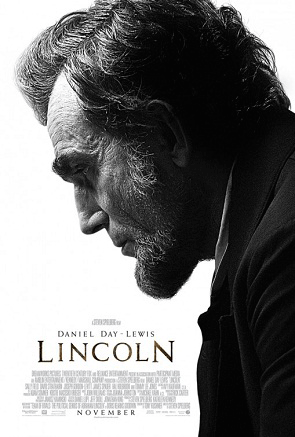
And one last note: did you know that there is an upcoming 2012 biographical drama film directed by Steven Spielberg, starring Daniel Day-Lewis as Abraham Lincoln and Sally Field as Mary Todd Lincoln? I also have listened to a Team of Rivals, this Fall should be cap stoned very nicely.
August 22, 2012
August 19, 2012
being overcivilized
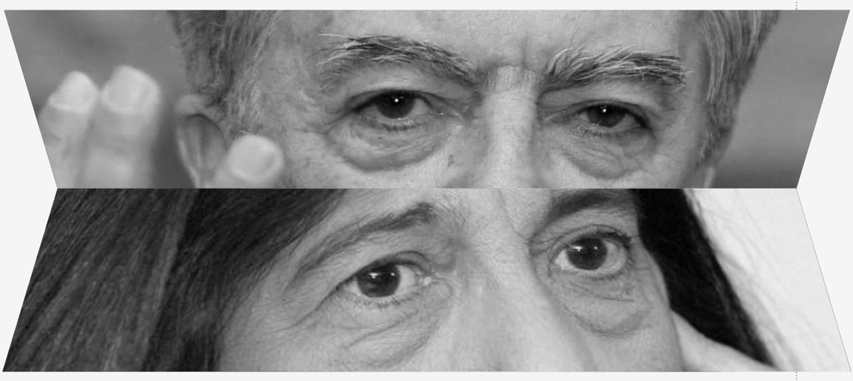
Earlier, I weighed in on the brewing controversy regarding what I called a civil war between self nominated proponents of populist art and intellectual art. I called this fight a sham because each side is deeply bought into the other, that the Postmodern epoch had used the mechanics of irony to mine the depths of banality, therefore leveling the high and the low, that this is a fight between siblings and there is nothing so wretched as a family which is tearing itself apart.
This morning, I was looking for an article in El Pais by Mario Vargas Llosa which was described by a British expat blogger in Galicia as a defense of bullfighting, and I found instead a 8 May 2012 interview by Jan Mart?nez Ahrens that gave me pause with the natural self satisfaction of the certainty of my position.
Here is the relevant part of the interview, emphasis mine:
Mario Vargas Llosa says that he's had the feeling that he's being laughed at for some time now. The Peruvian novelist and Nobel Prize winner says the sensation began to grow during visits to exhibitions and arts fairs, at shows, at the cinema, when watching television, and even when reading the press and certain books. He describes the feeling as a growing sense that he was being mocked, that he was "defenseless in the face of a subtle conspiracy" designed to make him feel stupid and uncultured, to make him feel that art was nothing more than a racket.After writing an essay about his unease, he eventually developed it into his latest book, La civilizaci?n como espect?culo (or, Civilization as entertainment), in which he examines the way that the arts have been reduced to a chaos where "there is no way to distinguish any more just what art is, so everything is art, and nothing is art." This breakdown of the cultural order is the result, he says, of the triumph of frivolity, the rule of entertainment.
According to his theory, the impact of the spread of banality is not just limited to the arts. Vargas Llosa concludes that our entertainment civilization has anesthetized thinkers, disarmed journalism, and above all, devalued politics, the latter having succumbed to a cynicism that nourishes corruption. He illustrates his argument with an example from his native Peru.
"In the most recent Peruvian elections, the writer Jorge Eduardo Benavides was shocked when a taxi driver told him that he would be voting for the daughter of disgraced former president Alberto Fujimori, currently serving a 25-year jail sentence for theft and murder. 'Aren't you worried that Fujimori is a thief,' he asked the taxi driver. 'No,' replied the man, 'because Fujimori only stole as much as he needed to'."
Question. You argue that the arts have been reduced to banality, that frivolity has triumphed, saying that eroticism has descended into pornography, that postmodernism is a failed experiment, that journalism tends ever more toward sensationalism, that politics is being degraded, and that in this civilization of entertainment, the comedian is king. Is there any hope left?
Answer. Yes, there is a way out of this. History changes, and can be changed. It is our destiny to live through an age in which we have witnessed some of the most extraordinary changes. If somebody had told me when I was a young man that the Soviet Union would disappear, that China would become a capitalist country, or that Latin America would grow while Europe was plunged into its worst financial crisis in a century, I wouldn't have believed them. So we have every reason to hope that our cultural life, the arts and the humanities can be revived, and that we can abandon this tendency toward the frivolous, which I believe is what characterizes the times we live in. Fortunately, there are still exceptions. Banality also affects every aspect of life: politics, sex, human relations...
My life has been enriched by good books, great art and wonderful music"
Q. And you have been aware of this for how long now?A. It's a process. It doesn't just happen. I remember visiting the Venice Biennale a few years ago, and after walking round, I was struck by the feeling that the whole thing was a sham. That was a defining moment, I suppose, and that is what led me to start thinking in this way. At the end of my book I explain how my life has been enriched by reading good books, by looking at great art, by listening to great music; how these things have given order to my life and stimulated me. It would be a tragedy now, at a time of incredible technological and material progress if the arts were simply to become something superficial; mere entertainment, leaving a vacuum that cannot be filled.
Q. Yet your book is deeply pessimistic, and seems strange for somebody who has been so successful in life.
A. I hope I am wrong, perhaps I'm just an old man... But sometimes... listen; I lived in England, and I remember being astonished when I first watched the television there. Television for me had always been mediocre, junk, and then suddenly I discovered that television could be used creatively, and not just for the arts, but for news. But then, after a few years, I noticed how British television had descended into frivolity.
Q. You suggest a return to the traditional patrons of the arts. Even leaving to one side the question of elitism, is this possible?
A. The idea of an aristocracy is anathema to many people, but we should remember that not everybody wants to be cultured in the same way, and nor should they. There are levels of specialization that are perfectly worthy, as long as that degree of specialization doesn't turn its back on society, in which case the arts stop having any influence on society, and we lose those common denominators that allow us to discriminate between what is authentic and what is fake; between good and bad; between beauty and ugliness. It is hard to believe that we now live in a world where we can no longer make those kinds of distinctions. Because once we lose them, we are lost in the world of sham, of smoke and mirrors. Advertising replaces talent, and simply invents it.
Q. You could be accused of wanting to return to a bygone age, of idealizing the past, and of wanting to fossilize society, to close it off to change.
A. I am completely opposed to the idea of fossilizing a society. I am not a conservative in that sense. I know that in the past there existed slavery, racism, religious dogmatism, the Inquisition, and burning at the stake for those who disagreed... At the same time, we should not forget that there is much to admire about the past, and things that have shaped our present and enriched people's lives, their senses and their imagination. And that was the role of culture. These days one cannot even talk about high culture; it is considered politically incorrect.
Llosa's remarks reminded me that while the Postmodern era can be described as an intellectual processing of the low by the high, it did't happen withou collateral damage. Earlier in a comment in FaceBook (too hard for me to retrieve at this moment), I used Susan Sontag to defend my argument that the intelligencia had invested itself into kitch for quite some time now: "The discovery of the good taste of bad taste can be very liberating. The man who insists on high and serious pleasures is depriving himself of pleasure; he continually restricts what he can enjoy; in the constant exercise of his good taste he will eventually price himself out of the market, so to speak. Here Camp taste supervenes upon good taste as a daring and witty hedonism. It makes the man of good taste cheerful, where before he ran the risk of being chronically frustrated. It is good for the digestion." -Notes on 'Camp (1964), note 54, p. 291.
But with her characteristic dialectical swing, Sontag also expressed these thoughts: "As Cioran correctly points out, a principal danger of being overcivilized is that one all to easily relapses, out of sheer exhausting and the unsatisfied need to be 'stimulated,' into a vulgar and passive barbarism. Thus, 'the man who unmasks his fictions' through an indiscriminate pursuit of the lucidity that is promoted by modern liberal culture 'renounces his own resources and, in a sense, himself. Consequently, he will accept other fictions which will deny him, since they will not have cropped up from his own depth.' There, he concludes, 'no man concerned with his own equilibrium may exceed a certain degree of lucidity and analysis.' " -Thinking against oneself: reflections on Cioran, p. 85. To my ear, these words echo Llosa's above.
So the upshot of all of these references upon my earlier stated position about this Civil War within the art world is this: I still think that an internecine art world war is tragic and must be resisted by all. But if I implied that everything is fine at this juncture of art history, that all we have to do is to "just get along", I was wrong to do so. I think that we will remain trapped within late Postmodern epoch until we are willing to critique it, a task of which few have as yet stepped up to. I think that this critique should have commenced at the fall of the Berlin Wall back in 1989-91. I think that this critique should have started at the zenith of Critical Theory, also then at the end of the 80's, when our mandarins were insisting that history had ended, that the author was dead, that painting was dead, that we should forget writing the next chapter of art history and instead busy ourselves with annotations in the end notes and bibliography. (In fact, what the art world had done instead was to move past Critical Theory en passant, to paint anyway, to relegate C.T. to the ghettos of art school boot camp and ignore it everywhere else -but we saluted it at the same time with an ever increasing lassitude.) I think that we were too timid, too bought in to the prevailing order, too lost in what Llosa described as a "world of sham, of smoke and mirrors", we were "overcivilized", as Sontag/Cioran put it. We proceeded into a 21st century, profoundly unprepared... we didn't prepare for it at all, in fact... and we won't be able to write the next chapter until we can look back to the previous century with a brutally (and respectful) critical eye.
August 17, 2012
Double Dirty Dozen at Freight + Volume
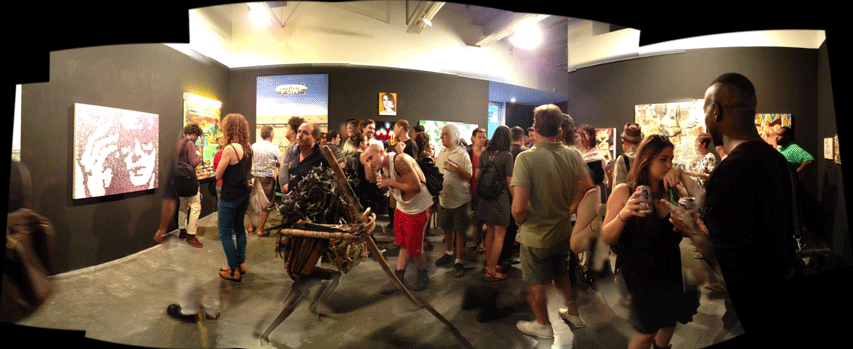

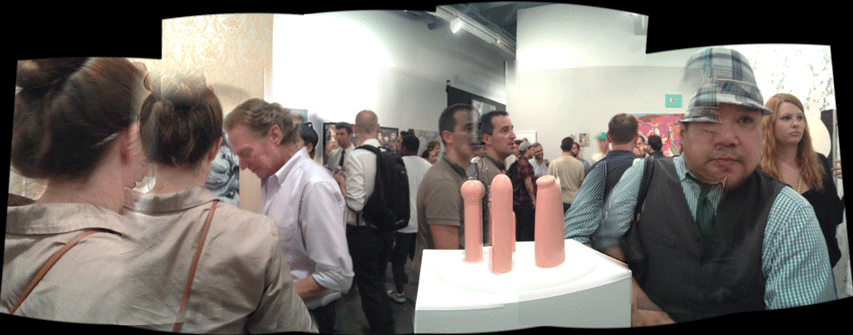
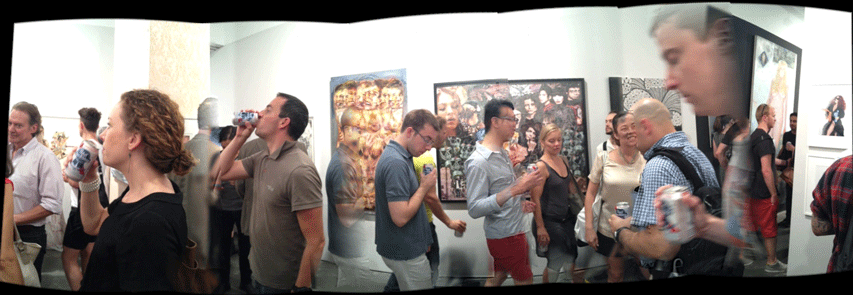
Most of the galleries here in NYC are closed for installation for the Fall season so it was a pleasant surprise to get a call from a friend to visit an opening of a group show featuring several established local artists at a gallery called Freight + Volume in Chelsea and have a beer or two afterwards. Here is a snip from the statement in their website:
When Robert Aldrich released his seminal war film in 1967 The Dirty Dozen, starring a seasoned, tough ensemble cast including Lee Marvin, Ernest Borgnine, Charles Bronson, Donald Sutherland, John Cassavettes, Jim Brown and Telly Savalas,, he created a genre not just pertinent to film but to other art forms as well. Music, writing, dance and the visual arts also have their renegades, their outcasts and outsiders, who prevail against impossible odds to find redemption through skill, cunning, madness ? and their art. The Double Dirty Dozen (& Friends) is an exhibition about the quest for freedom of expression ? sexual, intellectual, spiritual, political - and ultimately salvation through making art. While most of the participating artists are not ex-cons, in the process of curating this unruly group I felt somewhat like the character Lee Marvin plays in the film, Major Reisman, assembling his posse of ne?er-do-wells for a suicide mission, in the face of art world establishment.
Last Sunday with Henry Taylor & Zinna

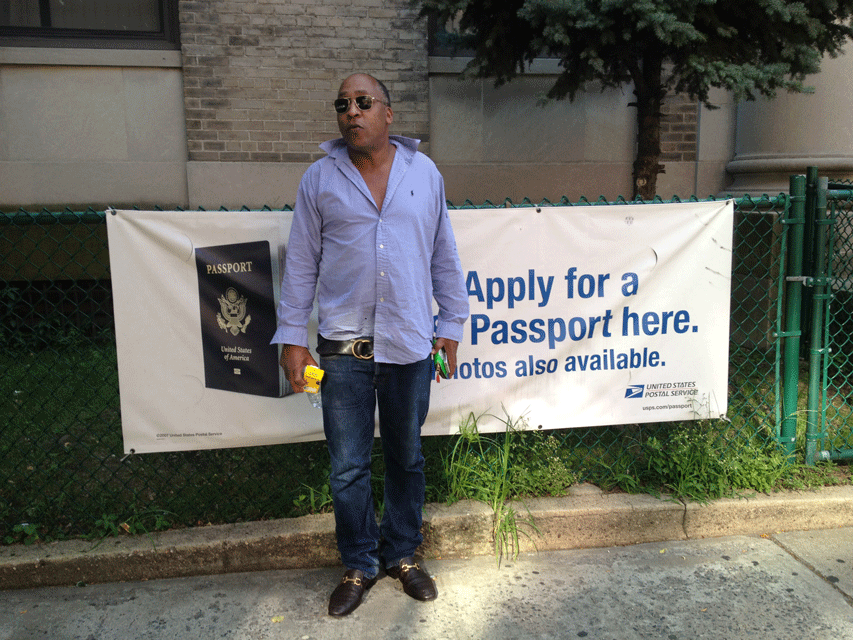
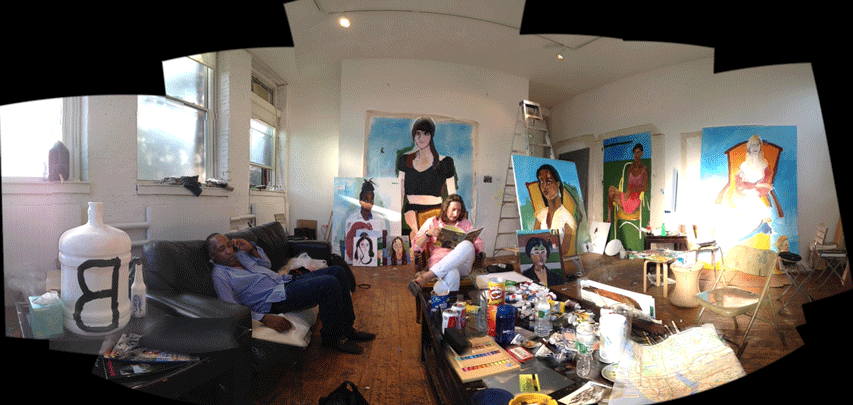
Last Sunday afternoon, I hung out with Henry and his friend Zinna. Zinna drove us to Henry's studio at PS1 in Zinna's impecable Fleetwood (black exterior, red interior, perfect detailing) across the Queensborough Bridge. Great ride, great route, great studio.
Elite vs Populist
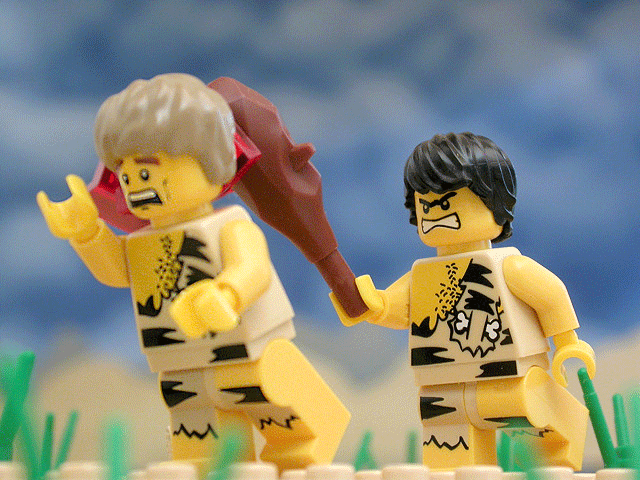
(Image Source)
In her column in Gallerist NY, Sarah Douglas asked for responses to the statement by Margo Levin Gallery partner Wendy Brandow on the occasion of the closing of their gallery in West Hollywood. ?People are approaching art differently today. They?re not seeking out the thoughtful, complete statement that artists make when they create gallery exhibitions. ? The exhibitions have been such an important part of what we do, and they are no longer valued as much by the public.? The substance of Brandow's statement has become fodder in the growing fight between people in Los Angeles art scene (and Manhattan, as far as I can tell so far) who are choosing sides between intellectual quality (Paul Schimmel and the artists once on the board of MOCA LA) and populism (Eli Broad and Jeffery Dietch). I had been watching this fight brew for weeks, hoping that it would become a mere blip in the news cycle. It seems to be more than a passing quarrel, so I felt compelled to vent a bit:
I don't buy the premise of the split between quality or intellectuality and populism, even though this meme has been promoted by both sides of this nascent civil war within our art world: Schimmel, Levin, Baldessari, Ruscha, Broad... There is no conceptual substance to this meme, not after Pop Art, Sontag, fifty years of Postmodernism, Baudrillard and more. The high and the low have interpenetrated many times over in the humanities of several recent generations.If there is a root of this problem, if there is a cause of this schizoid split, I would guess that it at the very least consists of the following interlocking complex: the stress generated by spotty history of management within MOCA LA, the extended drought of our economic recession, changes of scale in terms of population and commerce within the art world itself and the sheer youth of Los Angeles despite its status as a world class city. In simpler terms: there is very little money to work with in this situation. While I am an impulsive champion of the the exemplary legacy of Paul Schimmel (in every Schimmel show, one can be certain to find a provocative thesis that must be grappled with, this sadly atypical), it must also be said that all of the stressors listed previously have been addressed dynamically by Eli Broad and denied dynamically by the various putative agents of intellectual quality.
We are back biting each other over scarce resources. This is a neurotic behavior, it borders on madness. We must stop.
I am not a fan of wrapping ourselves with the intellectualist flag because i don't think this is an intellectual strategy. It is reactive and ultimately self defeating, it transforms an avant garde into a rear garde, it is a species of conservatism. Every charge of shallowness can be met with indictments of obscuritanism. It fences off and cedes a huge intellectual territory that had already been settled and domesticated previously. It is vanity itself. It seeks to browbeat its adversary into surrendering filthy lucre while denigrating them for generating it in the first place.
Since there are very few philanthropists in the SoCal region, ticket sales becomes a natural recourse. For those of us in the art world community who are wary of the alienation of general public from the overall art discourse, three solutions present themselves: either seek to educate the public in an attractive (entertaining) manner, further discover intellectual loam in populist themes, or fund the Magister Ludi with populist exhibitions. All of these solutions require a capacity of empathy, a desire to seek resolutions to conflict, and a willingness to overcome the alienation of "the other". If these qualities are some of the ways we describe ourselves, shouldn't we also demonstrate them as well?
Art requires the time and money that remains after food and shelter have been secured. Art museums require people of means (million/billionaires) to voluntarily underwrite their existence. If it is lamentable to some of us that Jeff Koons has been chosen by Eli Broad as the standard-bearer for the Postmodern epoch (?), then where is the billionaire who would articulate a more complex and "intellectual" alternative to headline a museum program anywhere in the world, much less in Southern California?
August 14, 2012
EP2LES- Equivalent Radii

(My LA commute radius mapped over LES.)
